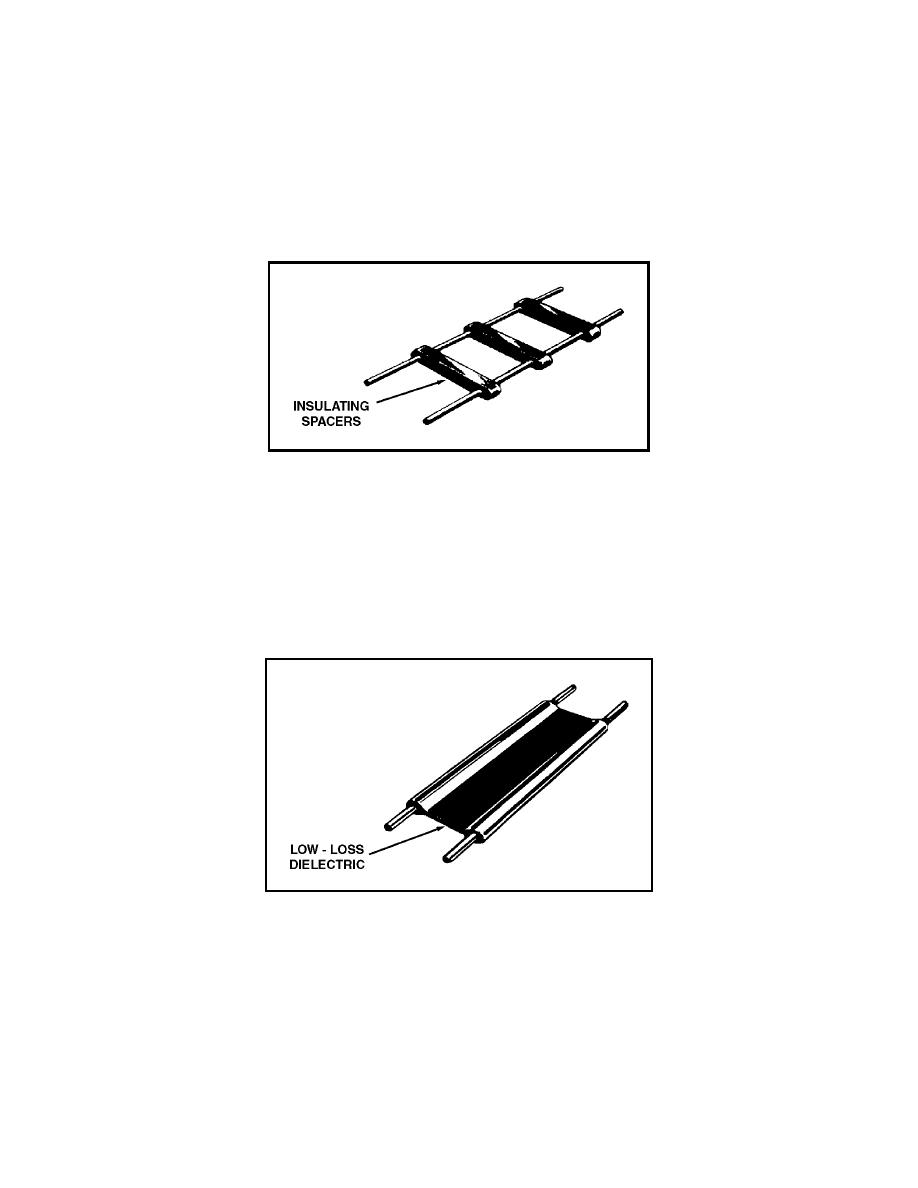
___________________________________________________ Principles of Transmission Lines
as a transmission line between a transmitter and an antenna or between an
antenna and a receiver. An advantage of this type of line is its simple
construction. The principal disadvantages of this type of line are the high
radiation losses and electrical noise pickup because of the lack of shielding.
The changing fields created by the changing current in each conductor
produce radiation losses.
Figure 3-2. Parallel Two-Wire Open Line
3-9. Another type of parallel line is the two-wire ribbon (twin lead)
illustrated in figure 3-3. This type of transmission line is commonly used to
connect a television-receiving antenna to a home television set. This line is
essentially the same as the two-wire open line except that uniform spacing is
assured by embedding the two wires in a low-loss dielectric, usually
polyethylene. Because the wires are embedded in the thin ribbon of
polyethylene, the dielectric space is partly air and partly polyethylene.
Figure 3-3. Two-Wire Ribbon Line
Twisted Pair
3-10. The twisted pair transmission line is illustrated in figure 3-4. As the
name implies, the line consists of two insulated wires twisted together to
form a flexible line without the use of spacers. It is not used for transmitting
at high frequency because of the high dielectric losses that occur in the
rubber insulation. When the line is wet, the losses increase greatly.
3-3



 Previous Page
Previous Page
